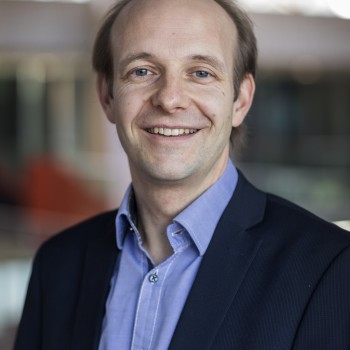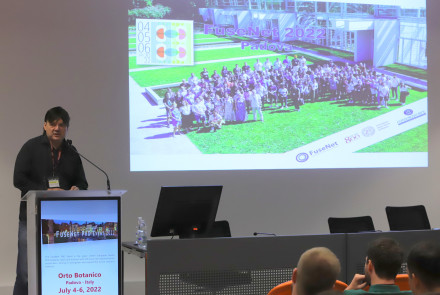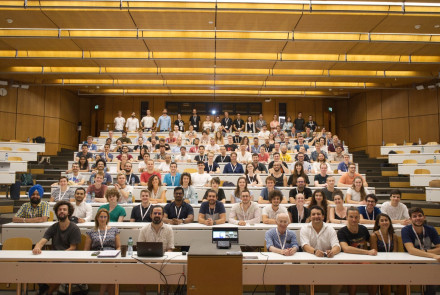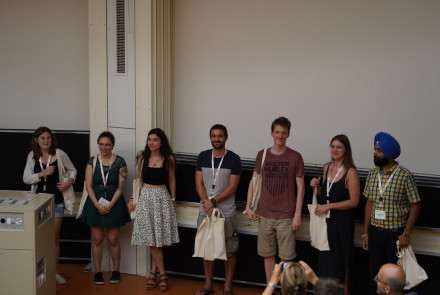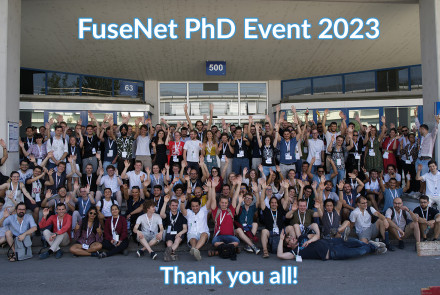Internship at CV Rez through FuseNet
[[{"type":"media","view_mode":"media_original","fid":"1103","attributes":{"class":"media-image","id":"2","style":"float: right; margin: 20px;;;;;;;;;;;","typeof":"foaf:Image"}}]]Fusion Master student Bram Wolf from Eindhoven University of Technology, reports on his internship at research centre CV Rez - making it one of the first student projects in industry established through FuseNet.
From pure physics to the engineering side of fusion
My pre-graduation internship is part of the recently established “Fusion Master" based at the Eindhoven University of Technology. It has been a desire of the Master program to diversify the pallet of internships, and in particular link with industry related to nuclear fusion development.
As a result, here I am: one of the first students venturing in the world of fusion related industry at the RezCentrum Výzkumu Řež (hereafter referred to as CV Rez, i.e. Research Centre Rez). CV Rez is a new member- and one of the first industry partners - of the FuseNet Association.
[[{"type":"media","view_mode":"media_original","fid":"1104","attributes":{"class":"media-image","height":"250","id":"2","style":"height: 250px; width: 250px; float: left; margin: 10px;;;;;;;;;;;","typeof":"foaf:Image","width":"250"}}]]Close, sometimes too close to the water...
Situated in the small town of Rez, 10 kilometers to the north of the city of Prague, research center Rez resides on the bank of the Vltava river (see photo on the left). Swelling to more than ten times the average water throughput last week, the water level surged to 4 meters above normal height. Fortunately, the company was lucky to only have minor flood damage in lower situated parts.
As precaution, the utility grid was deactivated temporarily and internet connectivity was lost in my case for almost a week. Local residents however were less lucky; hundreds of people were evacuated from their homes which, in the end, would partly or fully flood or in some cases be taken as a whole into the tumultuous river flow.
Research Centre Rez: from fission to fusion
As a center for research on nuclear power reactors originally established in the 1950s, this site houses one of the first nuclear fission research reactors in Europe. At this time approximately 1500 R&D staff work here in various areas of research and development, in particular on 4th generation nuclear fission reactors and renewable energy solutions.
Although CV Rez currently employs predominantly Czech researchers and engineers, ambitions for internationalization both in terms of attracting foreign talent and collaborations with institutes and universities is present. As a result, in recent years the company has broken new ground by diving into the European nuclear fusion R&D deriving from the ITER project.
Testing components and materials for ITER
CV Rez is working for ITER on testing the durability of plasma-facing components (PFCs) for the Blanket Module and also on tritium extraction from molten Pb-Li. My project focuses on the first of these topcis: the durability test of PFCs which will be fitted to the inner reactor vessel walls, and that are to be prematurely screened by cyclic high heat loading.
This screening is required to detect susceptibility to thermal fatigue due to any eventual faults in the complex construction of these components. Absorbed heat load will be required up to 20 MW/m2 to components with an area of up to 2.2 m2 in size. The contract for preparation and execution of these tests is commissioned by F4E to the industry of the Euratom members in Europe.
The HELCzA test facility: a new scale
The HELCzA (High Energy Load Czech Assembly) testing facility concept, which is in development at CV Rez with the full-scale irradiation testing in mind, acts as one of the contenders for the contract. The design is a derivative of the successful JUDITH II test facility in Juelich, Germany, which uses an electron beam as heating source. Although JUDITH II forms a good proof of concept and a nice reference, scaling up to the required dimensions of full-scale ITER components (roughly 4 times in size) is not a trivial task.
[[{"type":"media","view_mode":"media_original","fid":"1105","attributes":{"class":"media-image","height":"246","id":"2","style":"height: 246px; width: 500px;;;;;;;;;;;","typeof":"foaf:Image","width":"500"}}]]
Schematic of the HELCzA test facility under development at CV Rez
Freedom to look for improvements
While the current design of HELCzA is being finalized, my part in this project is to subject the proposed functional design to a critical physics feasibility test. Up till now, 6 weeks into the internship, this has resulted mainly in research related to electron beam heating efficiency and electron beam irradiation dynamics. While the current plans are already in an advanced stage, the project is still open to improvement propositions resulting from my research.
A small contribution to ITER, a great experience at CV Rez
I am glad to be able to use general physics background to propose improvements and enhancements on various aspects of the facility and consult on any arising issues from a physics point of view. In the process, I have enjoyed the freedom to address any subjects that I find relevant and which form critical factors in the device performance.
My main region of interest lies in the exploration of the physical boundaries and performance limitations based on the choice of design. Eventually I hope to assert my own contribution to HELCzA and, even if it is small, that we can thereby get another step closer to the success of ITER.
I would like to thank CV-Rez for providing and financially supporting this internship.

